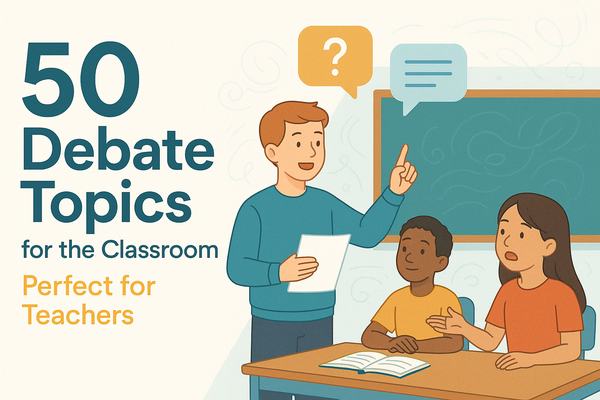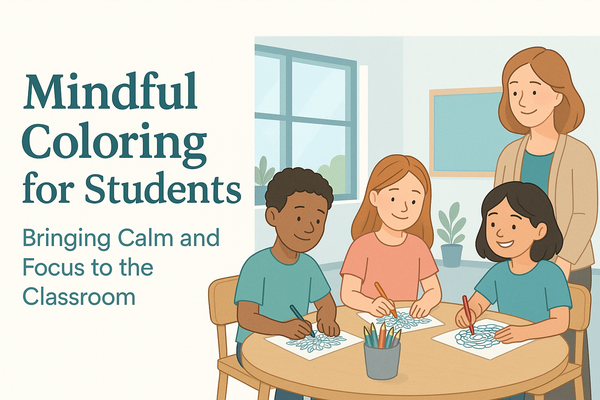Understanding Mirror Writing in the Classroom

Have you ever come across a student whose writing appears flipped, almost as if it were a reflection in a mirror? While it might seem puzzling at first, mirror writing is more common than you think, especially in young learners. But what causes it, and should teachers be concerned?
In this comprehensive guide, we will explore what mirror writing is, why some students do it, and, most importantly, how you can support them in the classroom. Whether you are encountering this for the first time or looking for strategies to help students overcome it, this guide will provide practical insights to enhance your teaching approach.
What is Mirror Writing?
Mirror writing is a unique way of forming letters or words in reverse, as though they are being reflected in a mirror. In simple terms, the text appears flipped, with letters written backward and sometimes even in the correct order but reversed in direction. This phenomenon is most commonly observed in young children who are still developing their writing skills, but it can also appear in individuals with certain neurological conditions.
For example, a child might write the word "dog" as "bop," or they may reverse individual letters, such as writing a "b" instead of a "d." This can be temporary and often resolves naturally as a child’s literacy skills progress. However, understanding why it happens can help teachers provide the right support to students who may struggle with letter orientation and handwriting.
Why Do Some Students Write in Mirror Writing?
Mirror writing can seem unusual at first, but it is often a natural part of a child's early writing development. Several factors can contribute to this phenomenon, ranging from brain development to individual learning styles. Understanding these reasons can help teachers provide the right guidance and support.
1. Brain Development and Processing
In early childhood, the brain still develops the ability to differentiate between left and right. Young learners are in the process of strengthening their spatial awareness and letter recognition skills, which can sometimes lead to reversed writing.
Research suggests that the brain does not initially treat reversed letters as incorrect, which explains why some children write them without realising.
2. Left-Handedness and Writing Direction
Mirror writing is more commonly observed in left-handed students. This may be because left-handed writers naturally move their hand from left to right across the page, making it easier to form letters in reverse.
Additionally, since many teaching resources and handwriting models are designed for right-handed learners, left-handed students may struggle with letter orientation in the early stages.
3. Learning and Memory Development
When children are first introduced to letters and words, they rely heavily on visual memory rather than muscle memory. At this stage, they may not yet understand the correct direction of letter formation, leading to reversals. As their writing practice increases and their motor skills improve, mirror writing typically diminishes.
4. Influence of Visual Perception
Some students process letters as shapes rather than symbols with fixed orientations. This is particularly common among young children who have yet to develop automatic recognition of letter direction. For example, while adults instantly recognise that ‘b’ and ‘d’ are distinct, children may view them as interchangeable forms of the same shape.
5. Neurological Factors
In rare cases, mirror writing can be linked to neurological conditions or differences in brain function. Some individuals with dyslexia or other learning differences may experience difficulties with letter orientation for a longer period. However, it is important to note that mirror writing on its own is not necessarily a sign of a learning difficulty.
Is Reversing Letters a Sign of Dyslexia or Dysgraphia?
One of the most common misconceptions about letter reversals is that they are an automatic indicator of dyslexia. While it is true that children with dyslexia may struggle with letter recognition and word formation, letter reversals are more closely linked to dysgraphia, a condition that affects writing skills. Understanding the distinction between these two conditions is key for teachers when assessing students’ writing challenges.
Dyslexia vs Dysgraphia: What’s the Difference?
Dyslexia is a reading disorder that impacts a child's ability to decode words, recognise letters, and process written language efficiently. While letter reversals can occur in dyslexic students, they are not a defining characteristic of the condition.
Dysgraphia, on the other hand, is a writing disorder that affects fine motor skills and the ability to produce clear, organised handwriting. Children with dysgraphia often struggle with letter formation, spacing, and consistency, which can lead to frequent letter reversals when writing.
It is estimated that up to 30% of children experience difficulties with letter formation at some point, but this is usually part of typical development. Young children, especially those in their early years of schooling, often write letters backward as they are still refining their motor skills and developing letter recognition. However, if letter reversals persist beyond Year 2 (around age seven) despite consistent practice and guidance, it may be worth exploring further support.
When to Be Concerned About Mirror Writing
For most students, mirror writing is a natural developmental phase that resolves as they grow and their literacy skills improve. However, in some cases, persistent or severe mirror writing may indicate underlying difficulties that require additional attention. It is important for teachers to know when to be concerned and how to identify when mirror writing might be a sign of a more complex issue.
Persistence Beyond Early Childhood
While mirror writing is most common in younger children, it typically decreases as they become more familiar with letter formation and reading skills. If a student continues to struggle with mirror writing past the age of seven or eight, it could be a sign that they need further support.
Difficulty with Reading and Spelling
If mirror writing is accompanied by difficulty recognising letters or trouble with spelling, it may indicate a more serious issue, such as dyslexia. Children with dyslexia often have trouble processing the orientation of letters, which can lead to reversals and confusion.
If a student shows consistent difficulty with both reading and writing, it is a good idea to explore the possibility of dyslexia or another learning difficulty with the help of specialists. You can notice students while you conduct speaking and listening activities.
Lack of Improvement Over Time
If a student’s mirror writing does not improve with consistent practice and support, it may be worth exploring whether there is a neurological or developmental issue at play.
Conditions such as dysgraphia (difficulty with handwriting) or other cognitive processing challenges can sometimes manifest through persistent letter reversals. In such cases, working closely with a learning support team is important to assess and address the issue.
Emotional or Behavioural Impact
Mirror writing can be frustrating for students, particularly if they feel embarrassed or discouraged by their struggles. If a student shows signs of stress, anxiety, or frustration about their writing, it is crucial to address the emotional impact of mirror writing.
Offering emotional support and ensuring that the student feels safe to make mistakes can help reduce any negative feelings associated with the issue.
Consistent Reversal of Letters or Words
While occasional letter reversal (e.g., confusing 'b' with 'd') is typical in younger students, frequent and consistent reversal of letters and entire words, especially as students advance in their literacy development, may require further investigation.
If mirror writing begins to affect a student's ability to write legibly or impacts their academic performance, it could be a sign of a deeper issue that needs to be addressed.
Other Possible Causes of Letter Reversals
While dysgraphia is one possibility, there are other factors that can contribute to letter reversals.
- Vision issues – A child with poor eyesight may struggle to see letters clearly, leading to errors in formation.
- Tracking difficulties – Some students find it hard to follow text across a page, making it difficult to form letters correctly.
- Attention span challenges – In a busy classroom, distractions can make it harder for some students to concentrate on their writing.
- Physical or emotional factors – Fatigue, illness, hunger, or even stress can affect a child’s ability to write neatly and accurately. In such cases, having designated calming corners in classroom will work best to help students feel better.
If you have concerns about a student’s letter reversals, it is helpful to collect samples of their writing over time. Keeping records can provide valuable insights when discussing the child’s progress with learning support teams or special education specialists. Early intervention can make a significant difference, ensuring that students receive the appropriate guidance and support tailored to their needs.
How to Support Students with Mirror Writing
Supporting students who experience mirror writing requires a patient, understanding approach coupled with practical strategies to help them develop correct letter orientation. For example, you can make your spelling lessons and activities visual to help students visualize and remember the alphabets as well.
As a teacher, you can rely on AI-powered tools like teacherbot.io to ease your workload and focus more on students’ development. By providing tailored guidance, teachers can help students overcome mirror writing challenges and boost their confidence in writing. Here are several effective techniques:
1. Promote Consistent Letter Formation Practice
Repetition and consistency are key in helping students learn correct letter formation. Encourage students to practise writing each letter in a consistent manner.
Use large letters on whiteboards or paper, ensuring that they have ample space to form each one correctly. This can help solidify their muscle memory and gradually reduce reversals.
2. Visual Aids and Letter Models
Using visual aids, such as alphabet charts, or showing students how to form letters using different colours, can be beneficial. For example, highlighting the direction of each stroke in a letter (e.g., top to bottom or left to right) reinforces the correct motion and direction.
Teachers can also provide students with models of correctly formed letters to copy, which may aid in their visual recognition and memory. Using anchor charts giving visual aids to students is a great way to help them.
3. Left-Handed Writing Tips
If you notice that a left-handed student is struggling with mirror writing, consider providing them with writing tools that are designed for left-handed learners, such as left-handed scissors or specially shaped pencils.
Additionally, positioning the student at a slightly different angle on the desk or giving them more space to write may reduce the natural tendency to write in reverse.
4. Use Multi-Sensory Techniques
Incorporating multi-sensory approaches can help students learn in a more engaging way. For example, having students form letters in sand, clay, or with finger paints allows them to feel the shape of the letters as they create them, making it easier for their brains to connect the visual, tactile, and motor processes.
Multi-sensory techniques can also involve saying the letters aloud as they are written or using auditory cues to reinforce correct letter formation. You can also add the mostly mirroed alphabets on bulletin boards to help students memorize them.
5. Reinforce Spatial Awareness
Spatial awareness plays a significant role in understanding letter orientation. Teachers can use exercises that help students better understand left, right, up, and down, as well as activities that focus on the concept of mirror images.
This might include puzzles, games, or activities like drawing shapes or lines that are symmetrical or require students to identify mirrored objects.
6. Be Patient and Provide Positive Reinforcement
Mirror writing can be frustrating for both students and teachers, but it is essential to be patient and offer positive reinforcement throughout the process. Celebrate small victories, whether it is the correct formation of a single letter or the reduction of reversals in a word.
Positive encouragement will motivate students to keep practising, while ensuring they feel supported rather than discouraged.
7. Seek Additional Support if Necessary
If mirror writing persists beyond the early stages of writing development, it may be worthwhile to seek additional support.
Consulting with a special educational needs coordinator (SENCO), occupational therapist, or educational psychologist can provide further insight into whether there might be underlying issues such as dyslexia or other learning difficulties.
Conclusion
Mirror writing may feel like a challenge at first, but it is an important part of the developmental process for many students. With patience, understanding, and the right strategies, teachers can guide their students through this stage, helping them build strong writing foundations. Remember, progress takes time, and every student’s journey is unique.




